Submitted by WA Contents
Snøhetta releases design for Theodore Roosevelt Presidential Library
United States Architecture News - Aug 20, 2020 - 10:54 4308 views
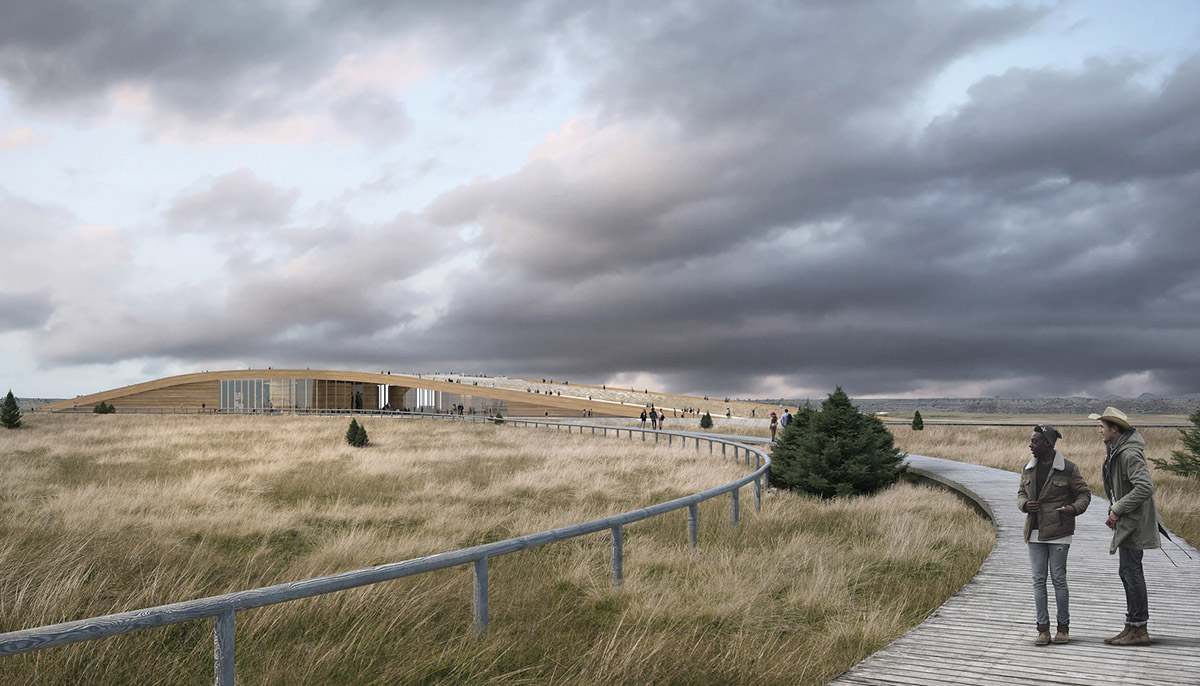
Norwegian architecture studio Snøhetta has released design for the Theodore Roosevelt Presidential Library, the studio is among the three finalists as well as Henning Larsen Architects and Studio Gang, which was announced in May 2020.
Henning Larsen, Snøhetta, and Studio Gang were selected from 12 firms that affirmatively responded to the T.R. Library Request for Qualifications (RFQ), which was made public in April.
The new Theodore Roosevelt Presidential Library will be built in Medora, North Dakota - a US state in the midwestern and northern regions of the United States.
Snøhetta’s design for the Theodore Roosevelt Presidential Library is informed by the President’s personal reflections on the landscape, his interest in environmental stewardship, and periods of quiet introspection and civic engagement.
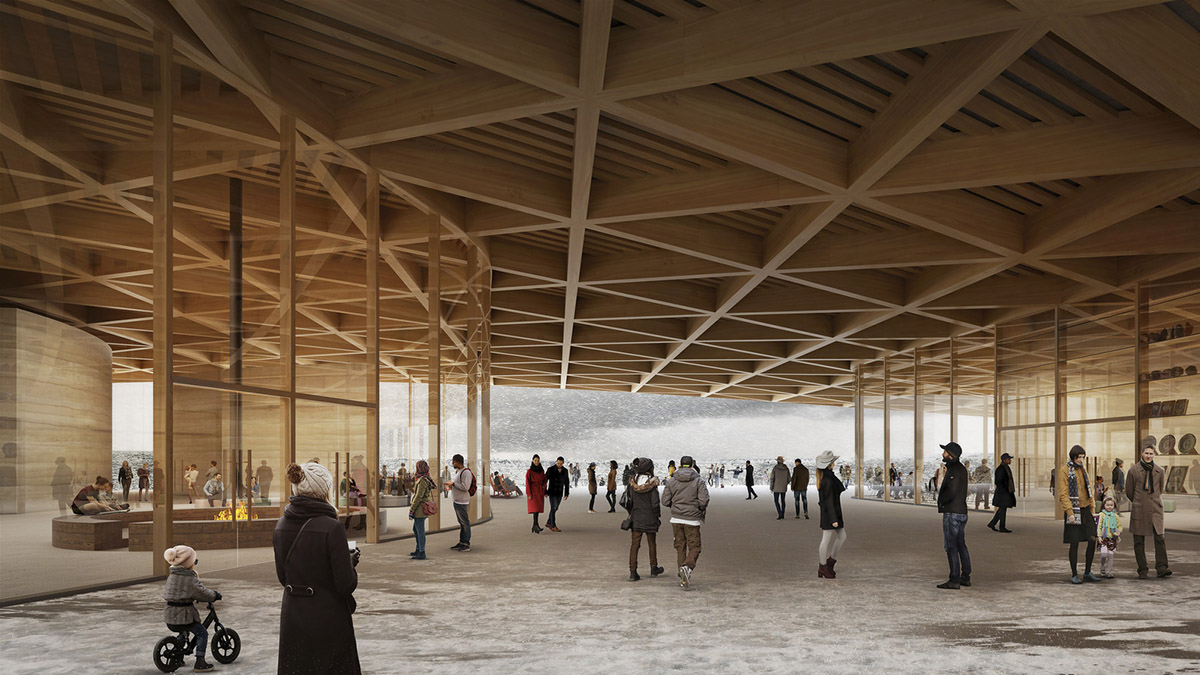
The design of the Library is more than a building, it is a journey preserving the existing landscape of diverse habitats punctuated with small pavilions allowing for reflection and activity. Its gently sloping roof looks to the northeast, gazing out to the National Park, historical settings in the Little Missouri River valley, and the Elkhorn Ranch far in the distance, further connecting the Library of tomorrow with its origins from the past.
The main building for the Presidential Library is defined by its unique roof rising from the butte, echoing the landforms of the surrounding Badlands.
Visitors can ascend the accessible rooftop to discover commanding views of the National Park and Medora during the day, as well as an ideal location for stargazing at night. Inside the Library, large windows highlight views to historically significant landscapes and complement the rhythm of the interactive exhibitions within. A generous covered porch overlooks the nearby valleys and can be used for gatherings throughout the year.
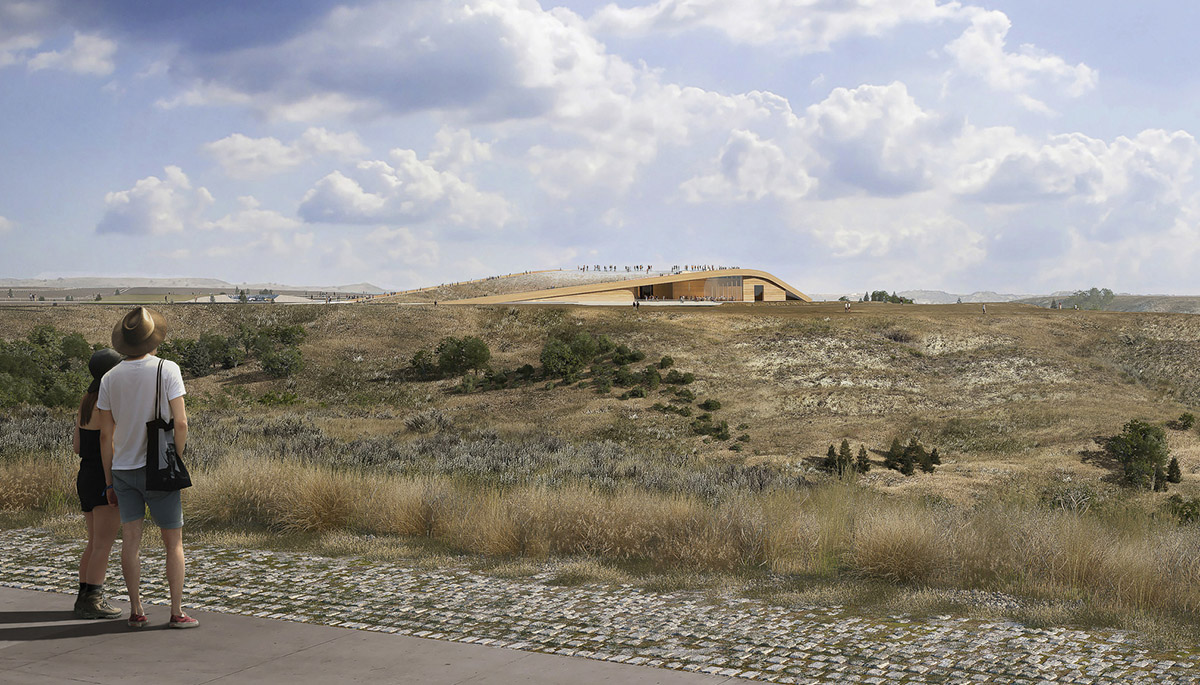
The Library’s location at the northeast edge of the butte preserves the landscape for research while offering a setting for educational walks, leisure, and recreation. As visitors set out on a loop from the Library, they will encounter adventurous paths which connect to the nearby Maah Daah Hey Trail as well as several small pavilions.
Ranging from contemplative nooks to expansive vistas, these pavilions allow visitors to experience Roosevelt’s trials and triumphs in in dialogue with the landscapes that shaped him.
Pavilions may also be used at other important locations related to the National Parks or include a facsimile of T.R.’s early Elkhorn Ranch cabin.
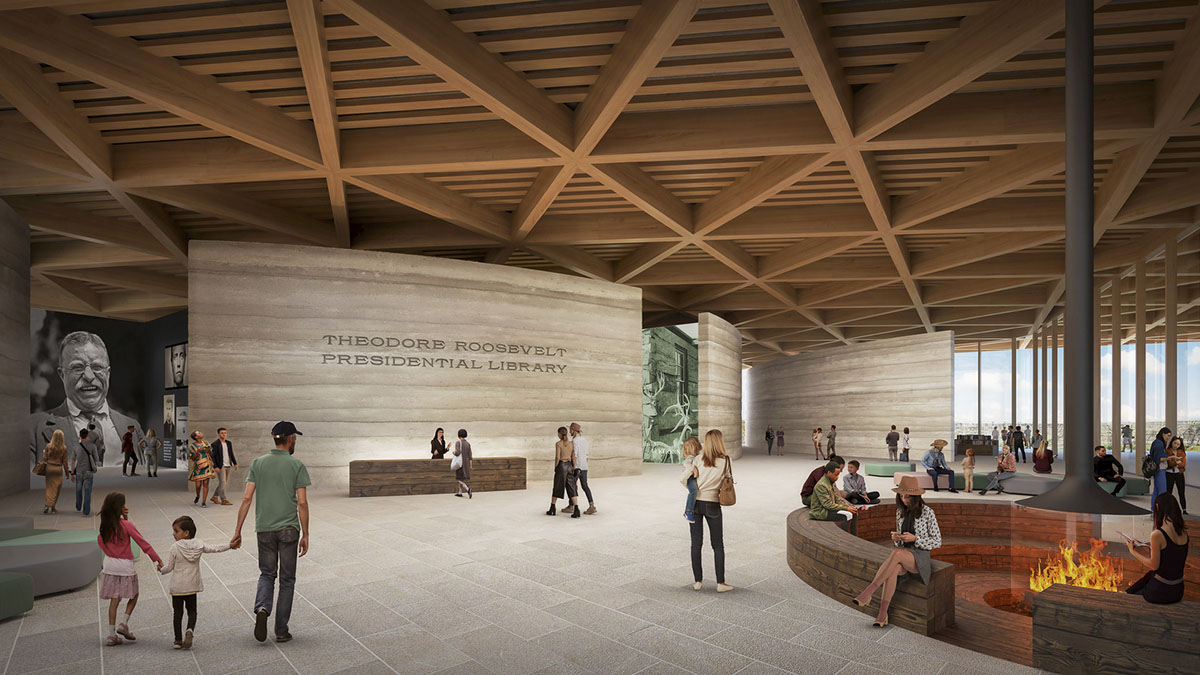
"The Library also functions in harmony with the unique ecology of the region and expresses the conservation ethos for which Roosevelt is remembered," said Snøhetta.
"Its construction will use natural and renewable materials, while its sophisticated energy systems will set a new standard for sustainable design in the region."
"Our design is oriented to diminish the impact of wind and other climatic factors so that the Library will be accessible in all seasons," the firm added.
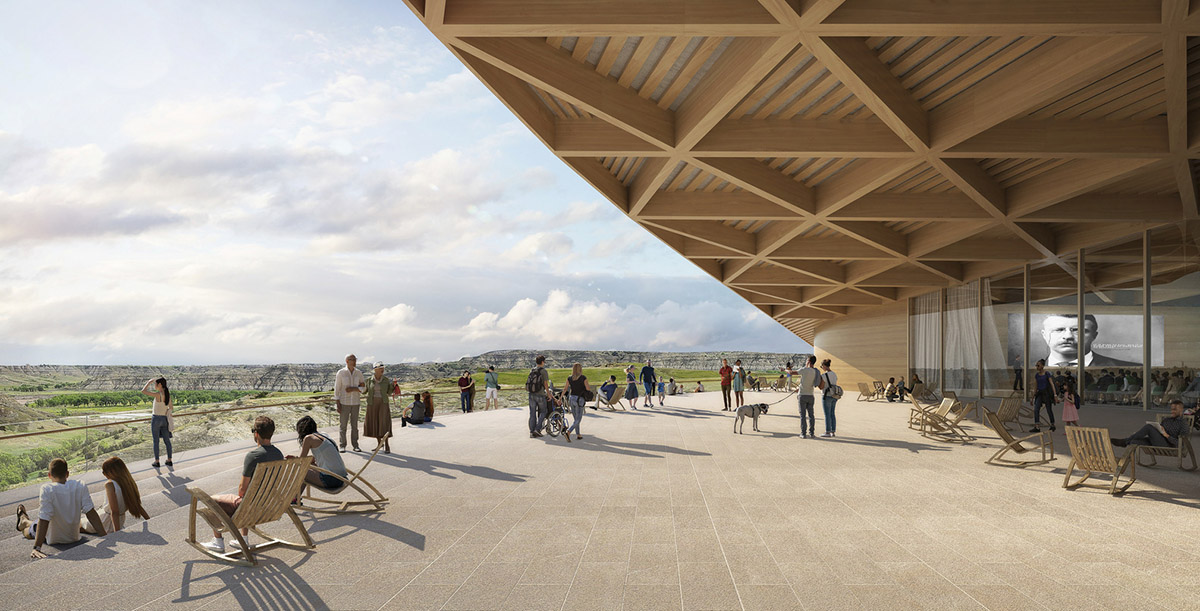
Facing northeast, the new Library looks onto the Little Missouri River, the former military camp called the Cantonment, and the original train depot in where T.R. first arrived in the area.
A parking option at Pacific Avenue nearby these locations, which we call the Depot, will allow visitors to connect easily to the town, the National Park, and the Library.
A caravan from the Depot will bring visitors on a dramatic electric train ride through a nearby wash to the Library atop the butte. This electric caravan can be expanded over time to support an ecosystem of destinations in Medora and the National Park.
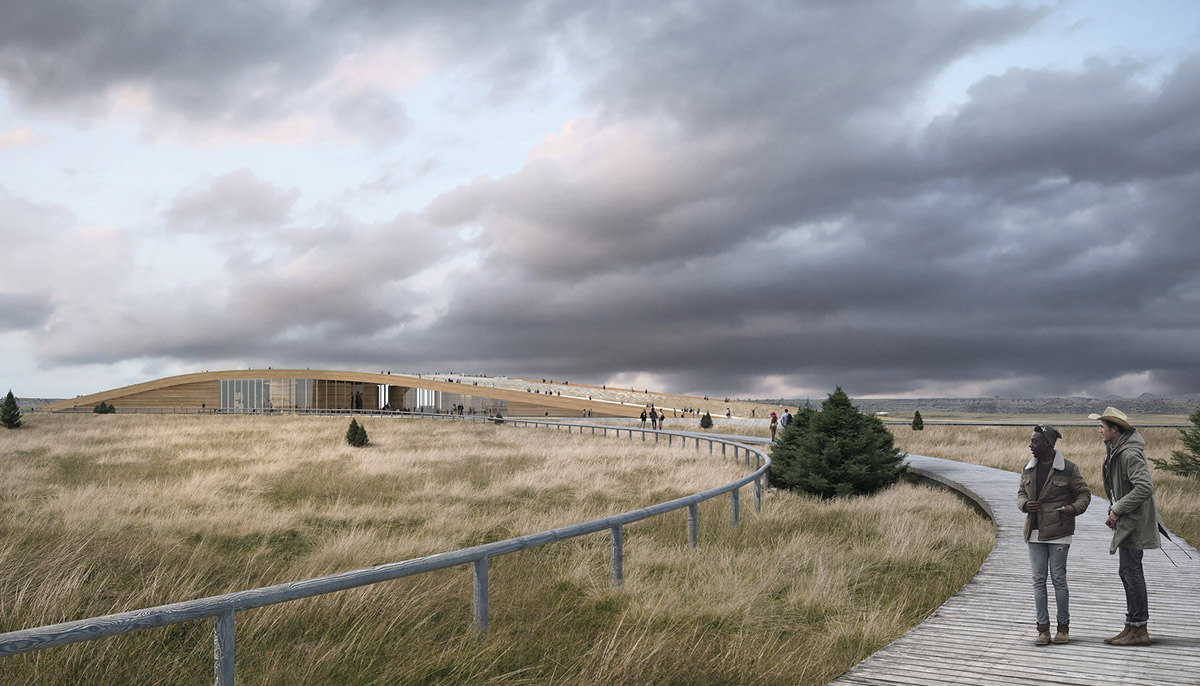
Snøhetta’s design for the Theodore Roosevelt Presidential Library strengthens connections to the town of Medora. Through strategies that streamline and activate the visitor experience, we see opportunities to connect the project to larger institutions such as the National Park Service, universities and schools, and look forward to engaging in a participatory design process to bring community input into a realizable project.
Drawing a continuum between past and present, our design captures the legacy of T.R., while also inspiring a commitment to the longevity and health of the region.
"We see this design process as more than just creating a building; it is about making a place for community, rooted in T.R.’s story and composed of all those who call North Dakota home."
The competition, run by the Theodore Roosevelt Presidential Library Foundation, selected three finalists to further develop designs in late May, 2020. The winning design will be selected in late September 2020.
All images courtesy of Snøhetta
> via Snøhetta
